The dancers’ stages were a crosswalk, an art museum and an outdoor sculpture. Motorists, pedestrians and onlookers became instant audiences. The result? An experience that was part modern dance concert, part moveable feast of creativity.
It was also a unique opportunity for Chapman University dance students to blur the lines between performer and viewer as they executed brief high-energy numbers around campus and in a nearby intersection during an afternoon flurry of performances.
Dancing Around Everything
“We were adapting the whole time. It was a fun challenge because we were really on our toes and ready to change and augment what we were doing at any given time,” said dance major Ashleigh Koenig ’18, one of four dancers to perform amidst the paintings in the Hilbert Museum of California Art. “I liked being close to people so I could see their reactions. They felt like they were a part of it, I could tell that.”
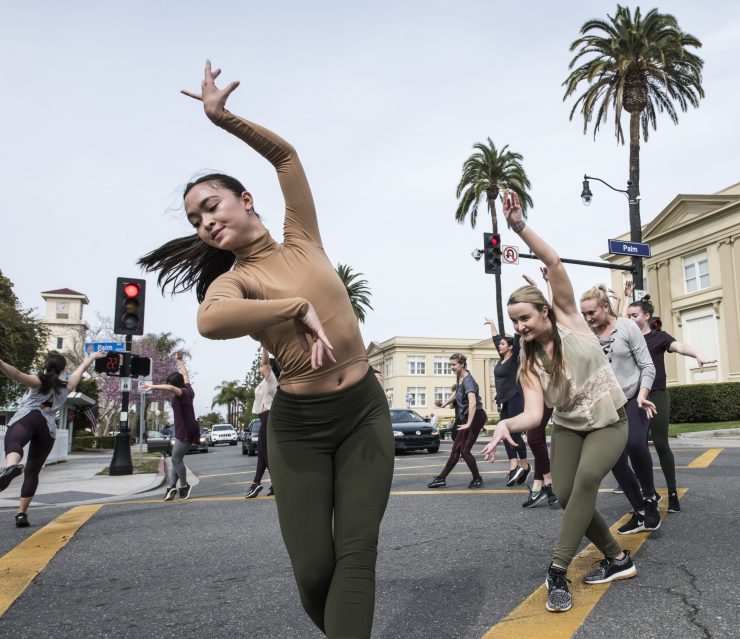
Called “Three Site-Specific Dance Performances,” the project was the closing activity for the recent High School Dance Day hosted by Chapman’s Department of Dance for several local high schools. Site-specific dance aims to make location as much a part of the performance as the dancers’ movement. In this instance, it also deepened the experience for students, several of whom collaborated with faculty on the choreography, says Julianne O’Brien, chair of the Department of Dance in Chapman’s College of Performing Arts.
Student Opportunity
“The goals of the site-specific performances were to give our majors additional opportunity to work with faculty and fine-tune their performance skills in settings that required extra presence,” O’Brien said.
Indeed, space and self awareness took on new meaning for the dancers, who made slight adaptations as museum guests, pedestrians and passersby stopped to watch or scurried across theirs paths for better views.
At the Hilbert, the choreography drew inspiration from the paintings. Dressed in muted jewel tones that mirrored several of the artworks, the dancers created elegant movements that echoed the shapes and moods painters had conveyed on canvas. Pacific Symphony musicians provided accompaniment with flute and harp.
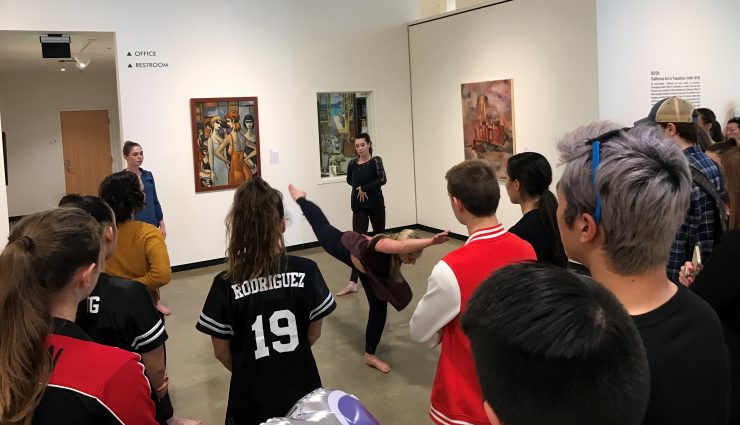
Near the center of campus, adjacent to Leatherby Libraries, another dance group performed a silent and meditative piece on the lawn dominated by the monumental sculpture “The Levitation of the Enchanted Princess” by Tony DeLap.
Perhaps most surprising was the program created for the intersection at Glassell Street and Palm Avenue. The crosswalk, sidewalks, street signs and even the outdoor tables of the corner Bruxie waffle shop were all stand-ins for a traditional stage.
Dancing in the Streets
On the green light, dancers leaped into the street, performed a brisk, contemporary number in the crosswalk, then sprinted to the curbs before the light changed. As traffic resumed, the dance continued on the sidewalks, with one group snaking into nearby Smith Hall and reemerging down its back steps in time for another turn in the crosswalk.
A bit of theatre played out, too, as performers called out to the flashing pedestrian crossing signs and each other. One clambered up a traffic light pole, called out “Alexa, what’s the force of gravity on a falling object?” and then fell backward into the arms of fellow dancers.
The experience was fleeting, but high school students who witnessed the mashup of life and art said the memories would be lasting.
“They’re such unique ideas. It inspires people to think out of the box,” said high school sophomore Zachary Hernandez, who attended the daylong series of workshops, lectures and studio performances. “It’s like a new message of what dance is.”
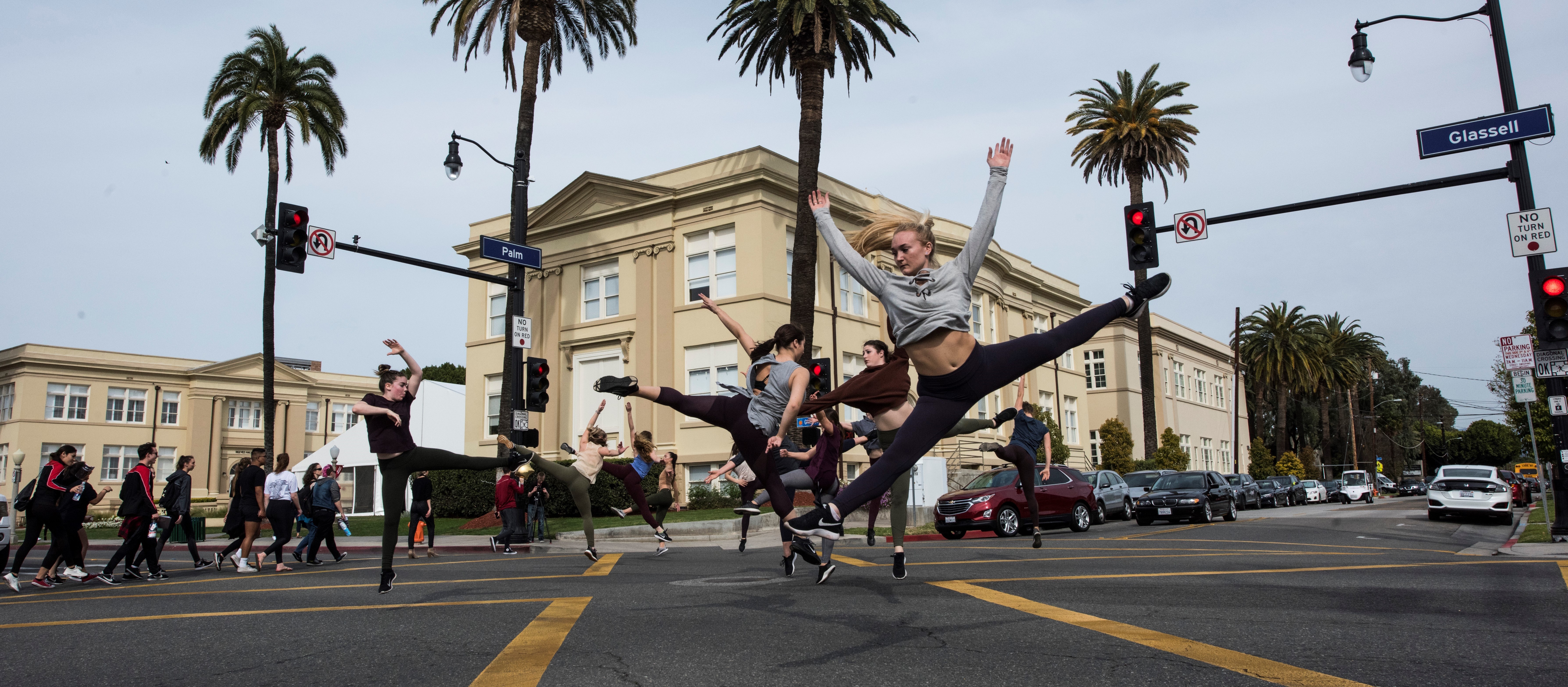
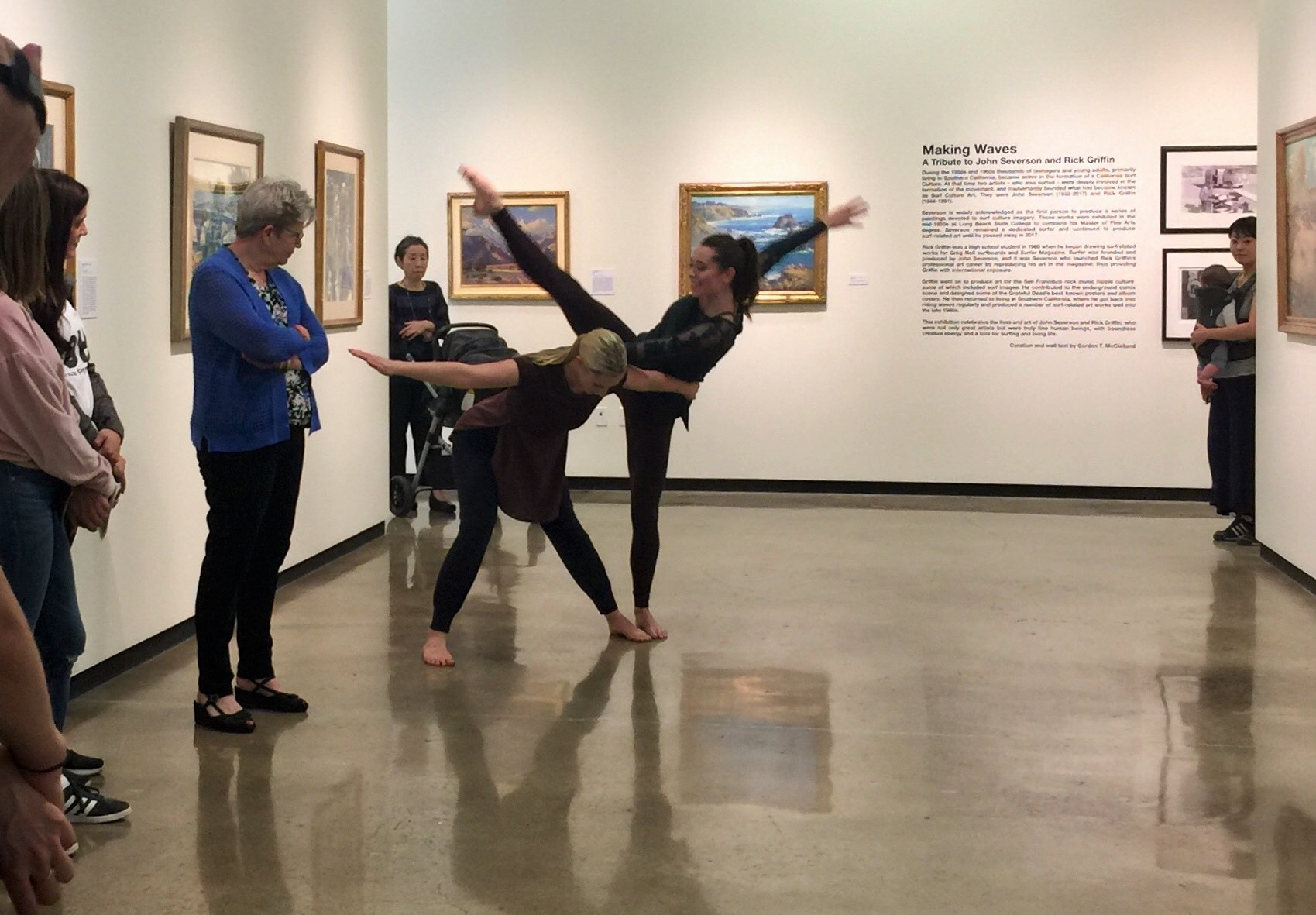
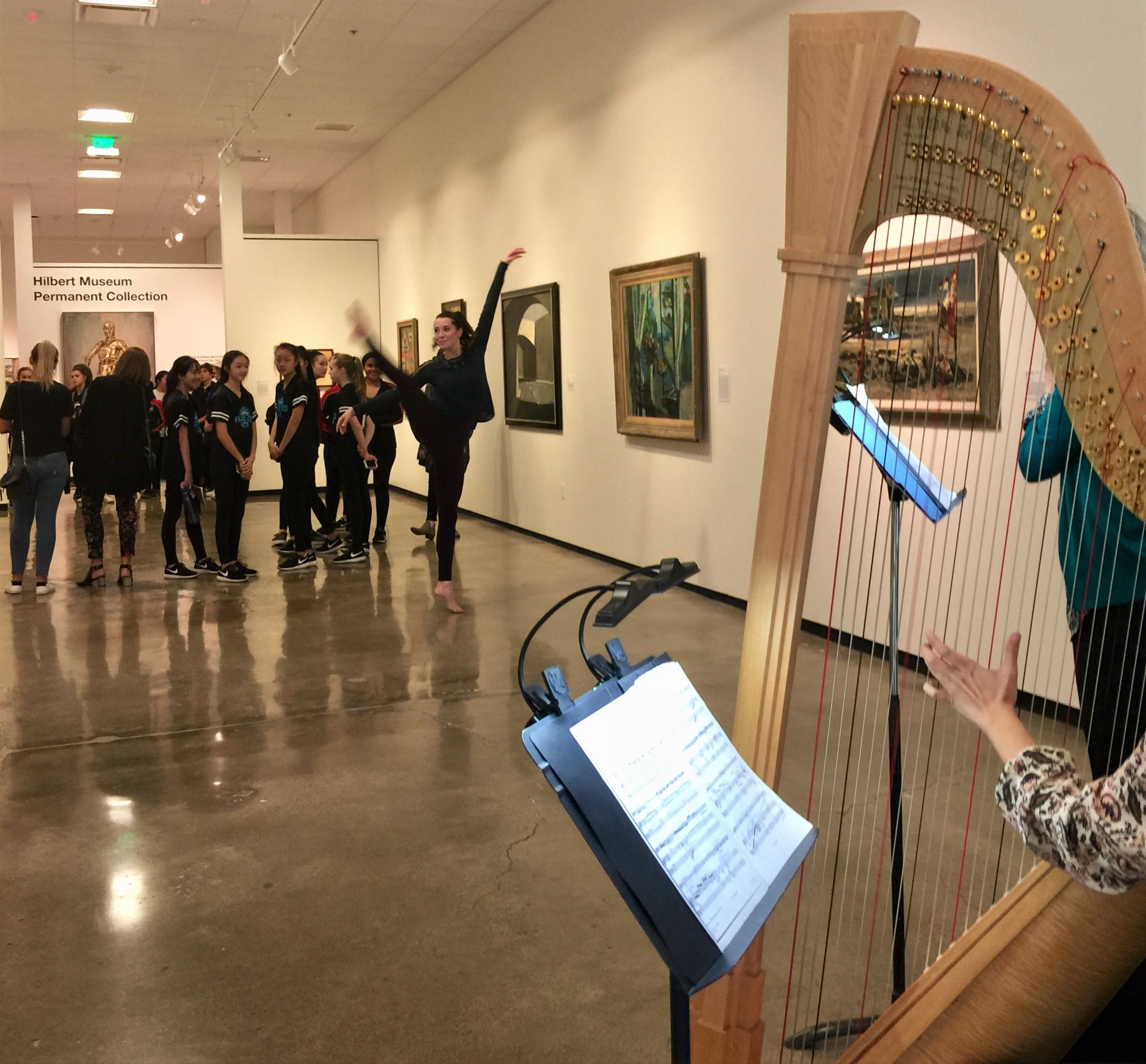




Add comment